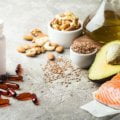Like every other subculture, Indian subculture is a malleable commodity, which makes it fortuitously hard to define as yours and mine. In critical ways, it is the opposite of what today’s rigid advocates of nationalism need to pass off as Indian, Pakistani, Muslim, or Hindu cultures.
Muslim women don’t wear saris, ran the parable in Pakistan. We didn’t want Bangladesh to prove it wrong. We, which include Prime Minister Narendra Modi, claim that Indian culture may also more frequently than not have roots in a faraway land and humans, which also holds for others.
Who doesn’t in India and Pakistan somewhere else fuss over tea, how it ought to be brewed or boiled, if or how good deal milk has to go into a cup, how many tons of sugar, at what temperature, and, of course, which pedigree of leaf? It’s without difficulty forgotten that the habit is the latest colonial legacy added to the subcontinent through the British from China, however most effective after forcing the Chinese to shop for and eat opium they took from India.
Tea, like gunpowder, is a Chinese innovation of patently Chinese origin. Seeing that in Chinese subculture, the usage of milk past infancy became alien, the unique perception of tea became virtually bereft of it. (It became India, beneath a Li Peng-P.V. Narasimha Rao %, which gave China its buffaloes in 1993 to usher in a dairy culture several years before the 2008 Beijing Olympics.)
Industrial sugar, too, came to India from England, and not earlier than the Muslim and Hindu clergy issued countless edicts against its use because animal bones were concerned in its production. Previously, people exchanged fruit, a tradition Ghalib had fun in, not chocolates that came to be made using the hallways, an Arabic word.
Overdue human beings and the Supreme Court have intervened and directly discouraged using polluting firecrackers to have a good time. Lord Ram’s return to Ayodhya on Diwali. What is overlooked in this grand advice is that gunpowder came to India via China and was first used in the main war within the First Battle of Panipat in 1526 through Mughal adventurer Babar towards a defenseless sultan of Delhi.
On a different day, friend and historian Sohail Hashmi sent me four episodes of quick movies — Hindostan ki Kahani (Story of India) – wherein he made a reasoned effort to disabuse Indians and others in their vague sense of countrywide delight. We take no consideration that the core of India’s subculture in food, clothes, and structure is displayed in an audio-visible framework with every element assigned a foreign shore. The cauliflower came to India from France, and cabbage became a British import.
Commenting on the myth of mouth-burning “Mughlai cuisine” laced with chilies, Hashmi says there was no such possibility during the Mughal duration. That’s because chilies came to India from Latin America with the Portuguese. Lalu Prasad Yadav had a slogan: “Jab Tak samosa mein aaloo rahega, tab take Bihar mein Lalu rahega”. (As long as there is potato inside the samosa, Lalu will rule the hearts of Bihar.)
Even the nationwide cultural icon called potato became ushered in as “batata” with the appearance of Europeans 400 years ago. As for the samosa traveled to India from Uzbekistan, where its miles are known as “Samsa.” Before sugar, India had Khansari, powdered gur, which traveled to the Middle East as qand and converted into candy in Europe.
The pajamas and kurta that Mr. Modi wears and the famous coat he flaunted during the Barack Obama visit are all of overseas origin. In architecture, the appearance of pillarless halls contributed substantially to the upward push of democracy. Roman senators sat as equals inside the chamber, although they played Caesar and different roles outside. India’s Parliament House has turned into the same technological facility.
Hashmi says the seminar was not a quintessential part of a mosque. To test that, he requested his friends from the National School of Drama to climb onto a minaret in Delhi’s medieval Jama Masjid. They went hoarse with shouting but couldn’t be heard by anybody on the mosque grounds. groundsudspeaker began a distinct ballgame within religion for as many sides as possible. I love eating virtually and trying many different cuisines from many one-of-a-kind countries. One day, my pal offered references to cuisines that are popularly said to be the most common globally. I agree that these cuisines deserve to be popularly said and told to delicious ones because of their distinctiveness. What cuisines are they? Go on studying to study the title.
The delicious flavor will be relatively exceptional, but preferred; these cuisines are delicious and sufficiently as the pinnacle five among different cuisines. They are:
1. French Cuisine. This delicacy may be very famous for its delicious wine. From the French Revolution era, the techniques for cooking French delicacies were stepped forward, and past due, it is considered excessive cooking in the twenty-first century. Parishere has 5,000 places to eat and diverse menus. Just select one of those locations that shape your flavor and range.












